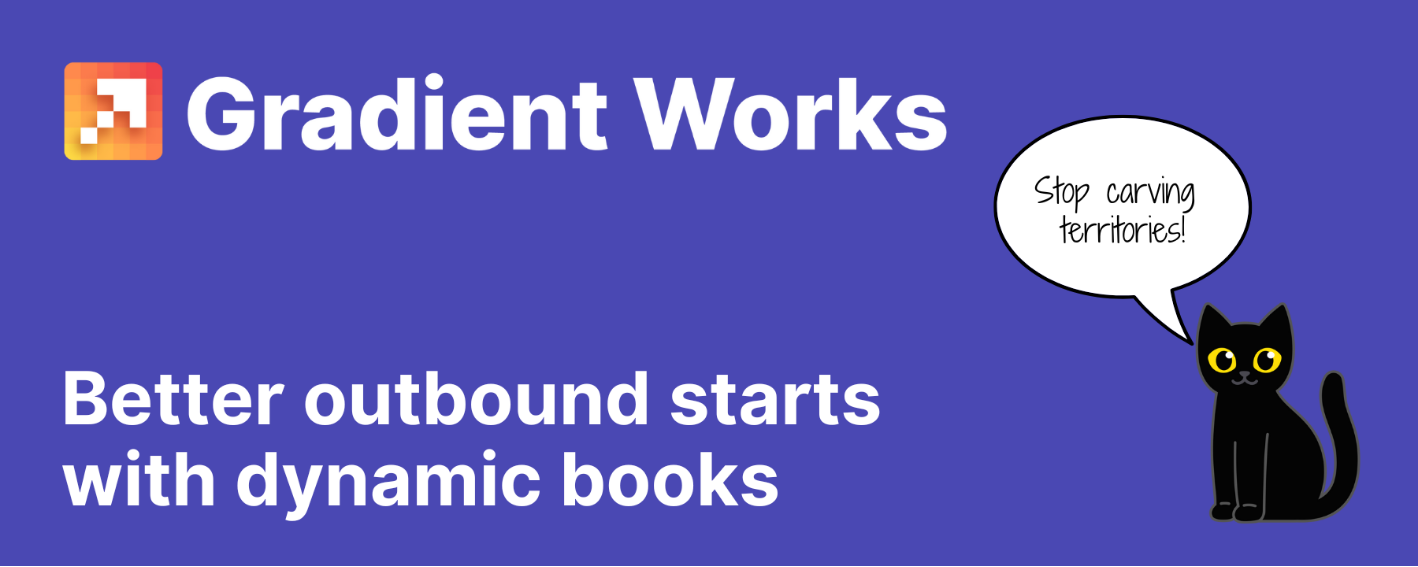As someone who’s been on the front line of B2B sales for a few years now, I’ve seen firsthand how the right sales tech can make or break our efforts. Whether it’s a CRM that feels like it’s from the stone age, the latest AI-powered analytics, or even the snazziest cold-calling software, the tech stack we choose is not just about keeping up with the times—it’s about setting the pace. Often, I think about old tech stacks I used and how much I would have benefited from using Gradient Works but we’ll get into that later.
But here’s the million-dollar question: Are you really getting the most from your tech stack? Let’s dive into why this is crucial for sales teams.
First off, the landscape of B2B sales is changing faster than ever. Buyers are more informed, and the competition is always just a click away. That’s why having a killer tech stack isn’t just nice to have; it’s essential. But it’s not about having the biggest toolbox; it’s about having the right tools that work for you, not against you.
Understanding your current sales tech stack
Before even thinking about adding a new tool to your team, take a hard look at what you’re currently using. Is your CRM integrating smoothly with your other tech? Are you automating the mundane tasks that eat up your day? If your answer is no, or if you’re spending more time managing technology than selling, it’s time for a change.
Choosing the right tools
When selecting tools, think about integration and usability. It doesn’t matter if a tool has the most advanced features if no one on your team can use them effectively. User-friendly interfaces and easy integration are key. Remember, every minute you spend trying to figure out a tool is a minute not spent engaging with prospects.
Here’s why Gradient Works is a game changer for your sales tech stack. We easily integrate into your CRM and give your sales teams the tools they need to select the best accounts that already exist in your CRM, assign the accounts, and optimize coverage of those accounts.
Let’s break it down.
- Selecting accounts: Our Market Map helps you intelligently segment and prioritize high-potential prospect accounts. Designed for the entire team, regardless of tech savviness. With just a few clicks, everyone from your newest rep to your seasoned sales director can dive in and get the lay of the land.
- Assigning accounts: Bookbuilder provides dynamic account distribution and returns so reps always have a book of great accounts.
- Optimizing coverage: account coverage helps you hold reps accountable and address market-level coverage gaps.
By integrating Gradient Works to your tech stack, you can quickly surface the right accounts, eliminating the need to sift through data or guess which lead to pursue next. Assign the accounts to your reps and lastly ensure your reps always have a solid book of accounts. Which goes back to my initial point, every minute you spend trying to figure out a piece of software is a minute not spent engaging with prospects.
Training and adoption
Rolling out new tech isn’t just about tutorials and training sessions. It’s about understanding the on-the-ground challenges your sales team faces and addressing them head-on. Adoption is key. If the team doesn’t fully adopt a new tech tool, you won’t see the ROI, no matter how powerful the technology claims to be.
Analytics and feedback
Once your new software is up and running, the real work begins. Use analytics to track how these products are impacting your sales processes. Are they saving time? Increasing conversions? The data doesn’t lie. And don’t forget to gather feedback from the team. If they find a new tool cumbersome or unhelpful, it’s crucial to know this ASAP.
Continuous improvement
Finally, optimizing your tech stack is an ongoing process. As our sales environment evolves, so should our tools. Stay updated on new technologies and be ready to pivot when a product no longer fits. It’s all about staying agile in a competitive market.
So, are you getting the most from your sales tech stack? It’s not just about leveraging technology to do more; it’s about using it smarter. Because at the end of the day, it’s not just about closing deals—it’s about building relationships and driving value that benefits everyone involved. If you’re ready to learn more about why adding Gradient Works to your tech stack is the right move - drop us a line!
Remember, the right tool stack doesn’t just support your sales strategy—it propels it forward. Let’s ensure we’re not just keeping up but setting the pace.







